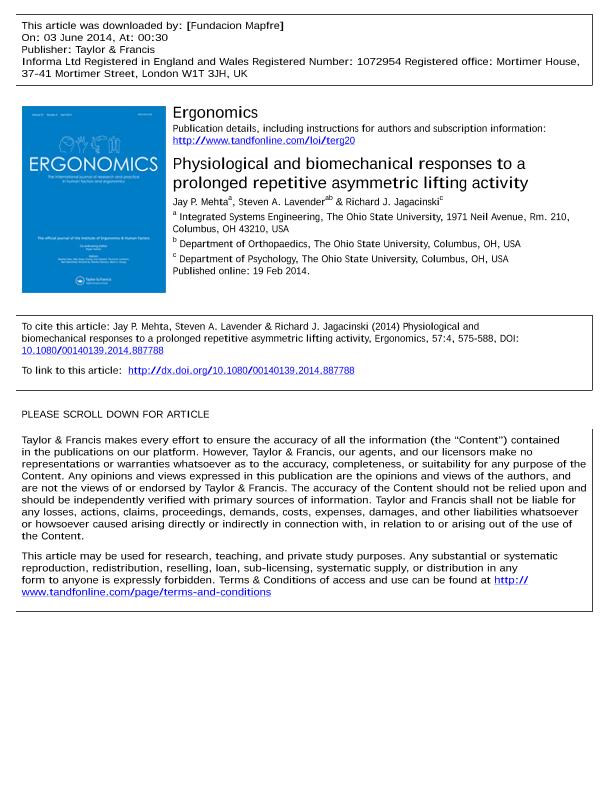Physiological and biomechanical responses to a prolonged repetitive asymmetric lifting activity

Contenido multimedia no disponible por derechos de autor o por acceso restringido. Contacte con la institución para más información.
| Tag | 1 | 2 | Valor |
|---|---|---|---|
| LDR | 00000cab a2200000 4500 | ||
| 001 | MAP20140020041 | ||
| 003 | MAP | ||
| 005 | 20140604163717.0 | ||
| 008 | 140603e20140407esp|||p |0|||b|spa d | ||
| 040 | $aMAP$bspa$dMAP | ||
| 084 | $a875 | ||
| 100 | 1 | $0MAPA20140009619$aMehta, Jay P. | |
| 245 | 1 | 0 | $aPhysiological and biomechanical responses to a prolonged repetitive asymmetric lifting activity$cJay P. Mehta, Steven A. Lavender, Richard J. Jagacinski |
| 520 | $aThis study investigated the effects of a prolonged repetitive asymmetric lifting task on behavioural adaptations during repetitive lifting activity, measures of tissue oxygenation and spine kinematics. Seventeen volunteers repeatedly lifted a box, normalised to 15% of the participant's maximum lifting strength, at the rate of 10 lifts/min for a period of 60 min. The lifts originated in front of the participants at ankle level and terminated on their left side at waist level. Overall, perceived workload increased during the repetitive lifting task. Erector spinae oxygenation levels, assessed using near-infrared spectroscopy, decreased significantly over time. Behavioural changes observed during the repetitive lifting task included increases in the amount of forward bending, the extension velocity and the lateral bending velocity, and a reduced lateral bending moment on the spine. These changes, with the exception of the reduced lateral bending moment, are associated with increased risk of low back disorder. | ||
| 773 | 0 | $wMAP20100019818$tErgonomics : the international journal of research and practice in human factors and ergonomics$dOxon [United Kingdom] : Taylor & Francis, 2010-$x0014-0139$g07/04/2014 Volumen 57 Número 4 - abril 2014 |

